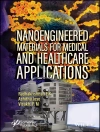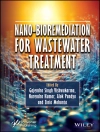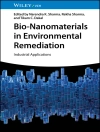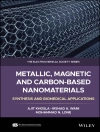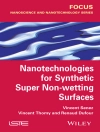Ever since the discovery of graphene, two-dimensional layered materials (2DLMs) have been the central tool of the materials research community. The reason behind their importance is their superlative and unique electronic, optical, physical, chemical and mechanical properties in layered form rather than in bulk form. The 2DLMs have been applied to electronics, catalysis, energy, environment, and biomedical applications.
The following topics are discussed in the book’s fifteen chapters:
* The research status of the 2D metal-organic frameworks and the different techniques used to synthesize them.
* 2D black phosphorus (BP) and its practical application in various fields.
* Reviews the synthesis methods of MXenes and provides a detailed discussion of their structural characterization and physical, electrochemical and optical properties, as well as applications in catalysis, energy storage, environmental management, biomedicine, and gas sensing.
* The carbon-based materials and their potential applications via the photocatalytic process using visible light irradiation.
* 2D materials like graphene, TMDCs, few-layer phosphorene, MXene in layered form and their heterostructures.
* The structure and applications of 2D perovskites.
* The physical parameters of pristine layered materials, Zn O, transition metal dichalcogenides, and heterostructures of layered materials are discussed.
* The coupling of graphitic carbon nitride with various metal sulfides and oxides to form efficient heterojunction for water purification.
* The structural features, synthetic methods, properties, and different applications and properties of 2D zeolites.
* The methods for synthesizing 2D hollow nanostructures are featured and their structural aspects and potential in medical and non-medical applications.
* The characteristics and structural aspects of 2D layered double hydroxides (LDHs) and the various synthesis methods and role of LDH in non-medical applications as adsorbent, sensor, catalyst, etc.
* The synthesis of graphene-based 2D layered materials synthesized by using top-down and bottom-up approaches where the main emphasis is on the hot-filament thermal chemical vapor deposition (HFTCVD) method.
* The different properties of 2D h-BN and borophene and the various methods being used for the synthesis of 2D h-BN, along with their growth mechanism and transfer techniques.
* The physical properties and current progress of various transition metal dichalcogenides (TMDC) based on photoactive materials for photoelectrochemical (PEC) hydrogen evolution reaction.
* The state-of-the-art of 2D layered materials and associated devices, such as electronic, biosensing, optoelectronic, and energy storage applications.
Mengenai Pengarang
Inamuddin, Ph D, is an assistant professor at King Abdulaziz University, Jeddah, Saudi Arabia and is also an assistant professor in the Department of Applied Chemistry, Aligarh Muslim University, Aligarh, India. He has extensive research experience in multidisciplinary fields of analytical chemistry, materials chemistry, electrochemistry, renewable energy and environmental science. He has published about 150 research articles in various international scientific journals, 18 book chapters, and 60 edited books with multiple well-known publishers.
Rajender Boddula, Ph D, is currently working for the Chinese Academy of Sciences President’s International Fellowship Initiative (CAS-PIFI) at the National Center for Nanoscience and Technology (NCNST, Beijing). His academic honors include multiple fellowships and scholarships, and he has published many scientific articles in international peer-reviewed journals, edited books with numerous publishers and has authored twenty book chapters.
Mohd Imran Ahamed received his Ph.D on the topic ‘Synthesis and characterization of inorganic-organic composite heavy metals selective cation-exchangers and their analytical applications’, from Aligarh Muslim University, India in 2019. He has published several research and review articles in SCI journals. His research focusses on ion-exchange chromatography, wastewater treatment and analysis, actuators and electrospinning.
Abdullah M. Asiri is the Head of the Chemistry Department at King Abdulaziz University and the founder and Director of the Center of Excellence for Advanced Materials Research (CEAMR). He is the Editor-in-Chief of the King Abdulaziz University Journal of Science. He has received numerous awards, including the first prize for distinction in science from the Saudi Chemical Society in 2012. He holds multiple patents, has authored ten books and more than one thousand publications in international journals.


